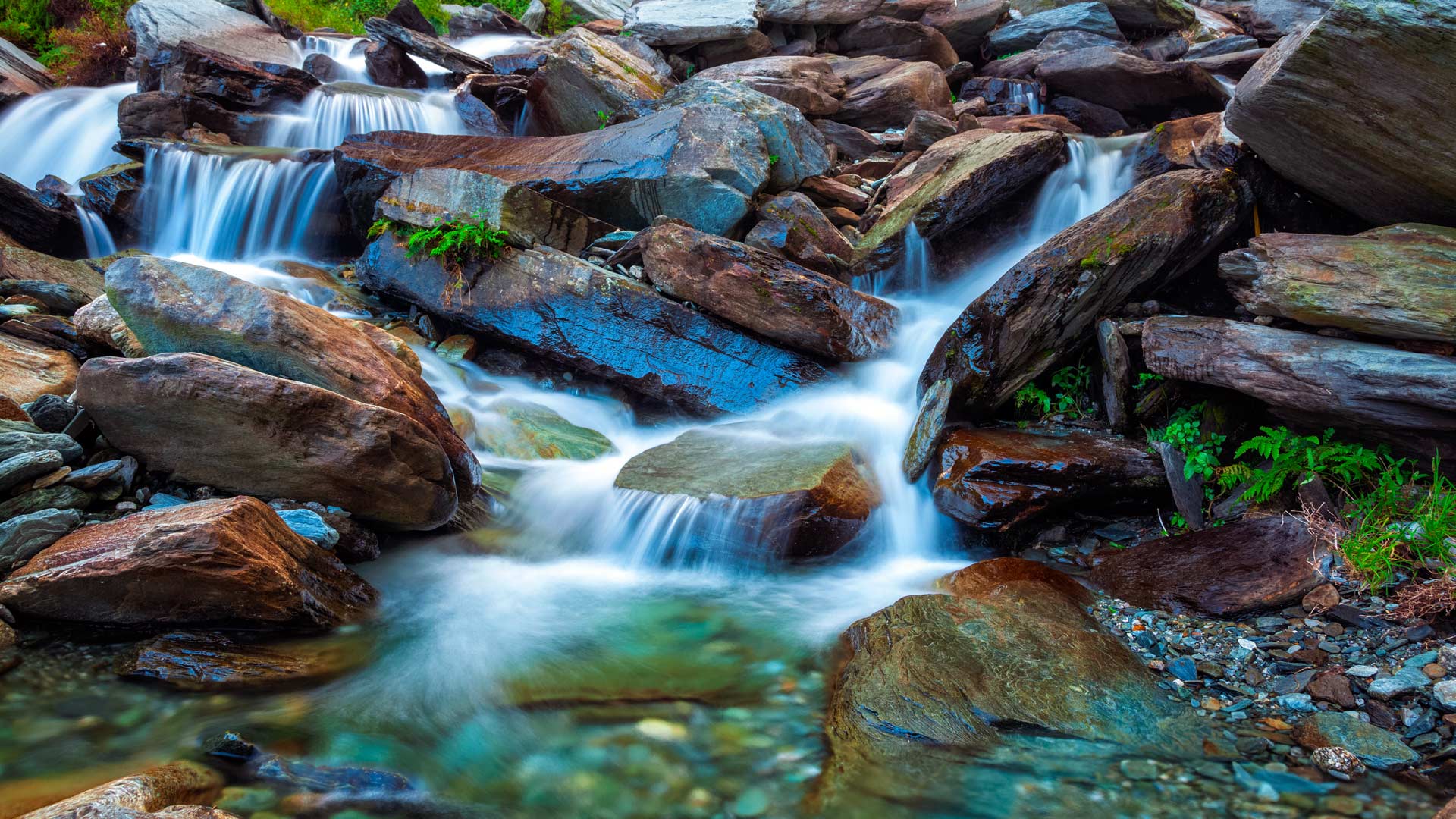2020年4月
优胜美地国家公园中的春季瀑布 Vernal Fall in Yosemite National Park, California (© elvistudio/Shutterstock)
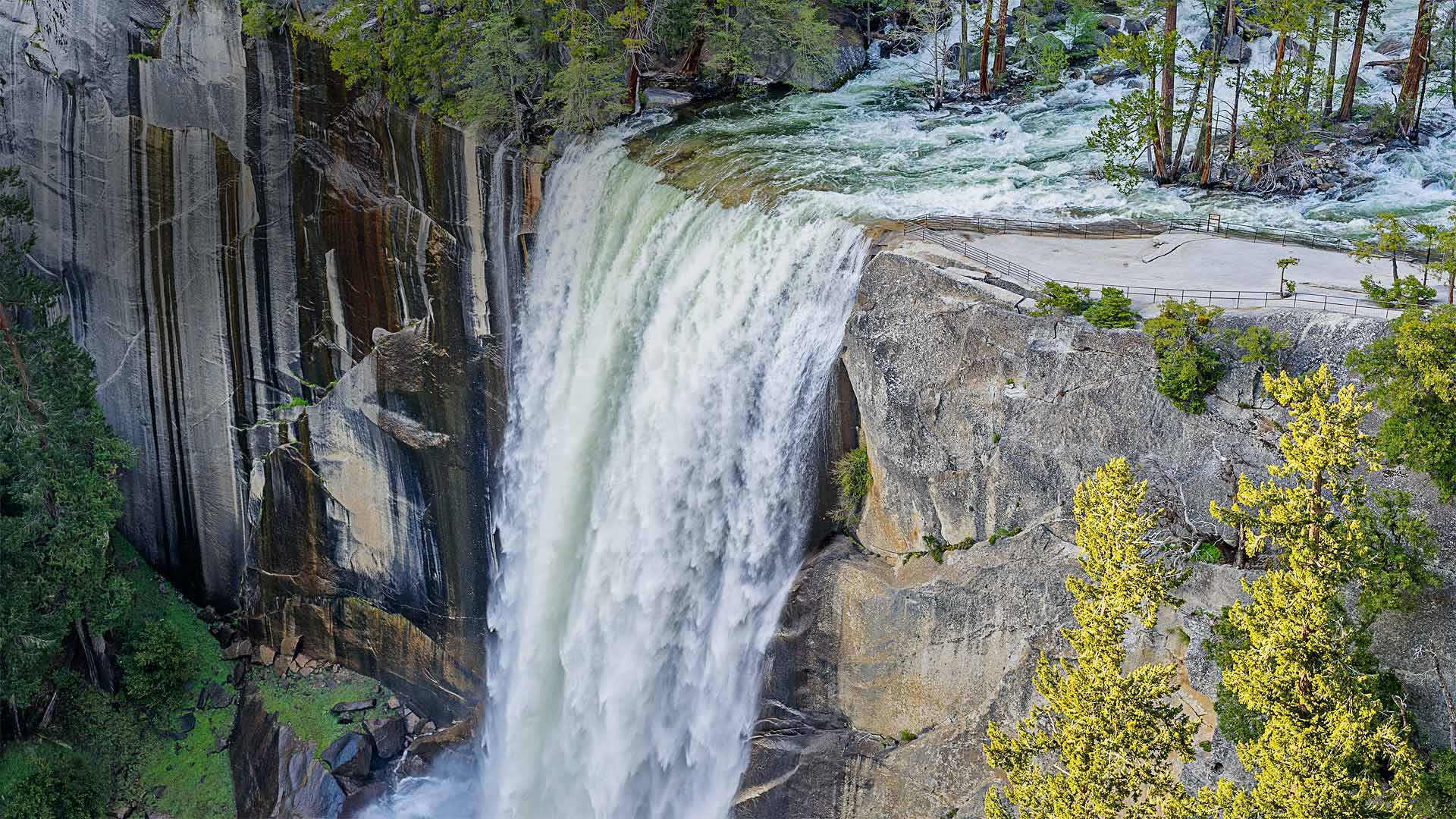
优胜美地国家公园中的春季瀑布 Vernal Fall in Yosemite National Park, California (© elvistudio/Shutterstock)
National Parks Week begins
To kick off National Park Week, which starts today, we're turning our lens on Vernal Fall in California's Yosemite National Park. This time of year, the waterfall flows in a torrent, but by late summer it can be reduced to a trickle of small streams slipping over the edge. Most years, Vernal Fall is at full power by May, as the spring thaw in the mountains melts the snowpack, turning the falls into a raging tumble of water spilling to the valley floor where the Merced River flows.
天生桥国家保护区中的sipapu桥,犹他州 Sipapu Bridge in Natural Bridges National Monument, Utah (© Fyletto/Getty Images)
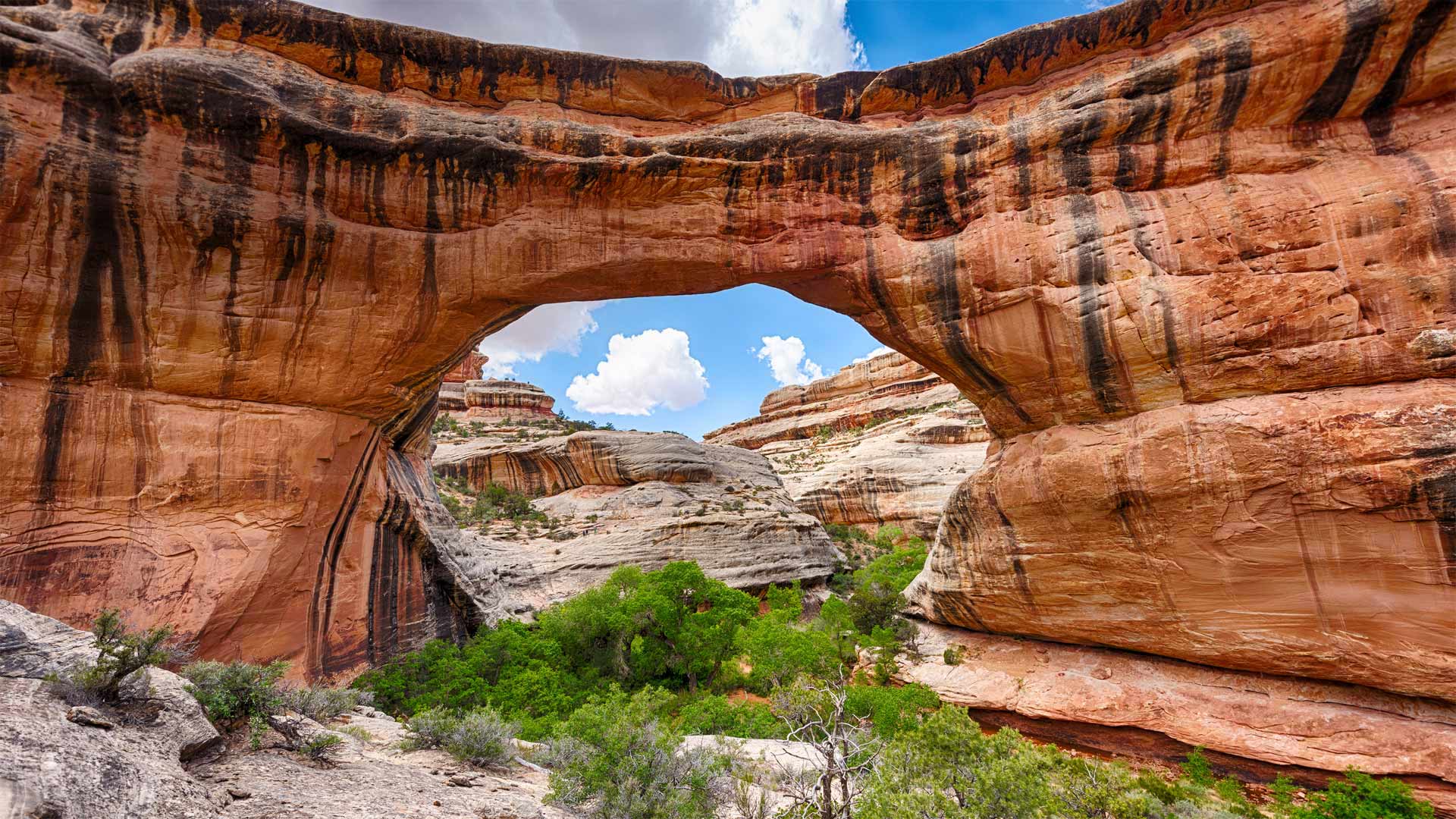
天生桥国家保护区中的sipapu桥,犹他州 Sipapu Bridge in Natural Bridges National Monument, Utah (© Fyletto/Getty Images)
Bridges to the past
The story of this sandstone formation in southeastern Utah's Natural Bridges National Monument begins around 10 million years ago. That's when tectonic shifts began slowly lifting the 130,000 square-mile Colorado Plateau above the surrounding plains. In ensuing eons, the Colorado River's many streams eroded the elevated land, threading it with deep canyons. When water broke through one canyon wall into another canyon, sometimes a natural bridge like this one remained above the breach.
The national monument—Utah's first, proclaimed by President Theodore Roosevelt on April 16, 1908—protects three major bridges: Sipapu (pictured, and the largest), Kachina, and Owachomo. But even the president's pen can't stop the slow ravages of time. In a 1992 rockfall, Kachina slimmed down by 4,000 tons—and the remains of many fallen bridges dot the monument, hinting at the main attractions' eventual fate.
Bhagsu的热带瀑布,印度喜马偕尔邦 (© f9photos/iStock/Getty Images Plus)
Wat Chaloem Phra Kiat Phrachomklao Rachanusorn的浮庙,泰国南邦 Floating temples of Wat Chaloem Phra Kiat Phrachomklao Rachanusorn in Lampang province, Thailand (© pa_YON/Getty Images)
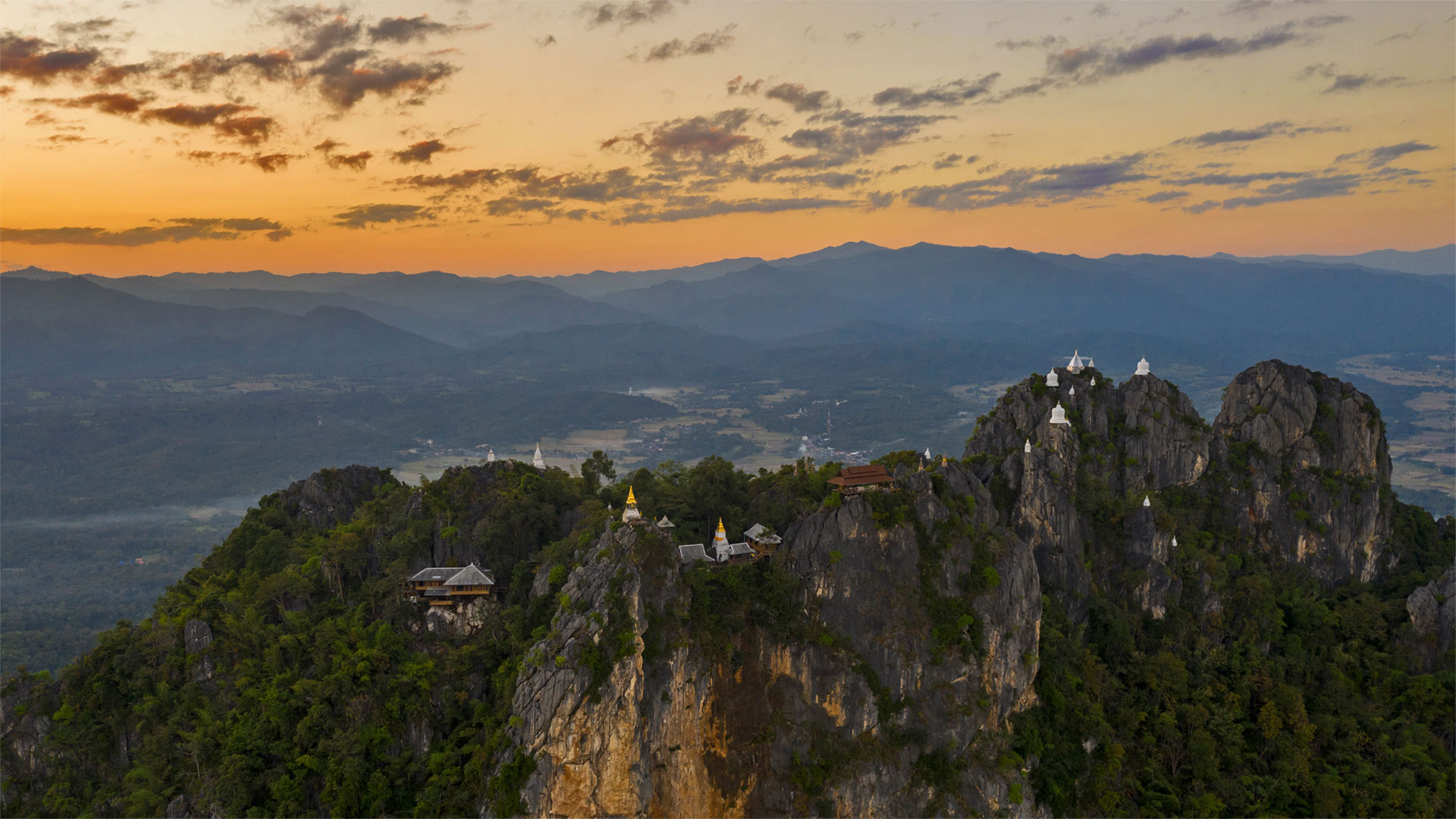
Wat Chaloem Phra Kiat Phrachomklao Rachanusorn的浮庙,泰国南邦 Floating temples of Wat Chaloem Phra Kiat Phrachomklao Rachanusorn in Lampang province, Thailand (© pa_YON/Getty Images)
Floating temples in the Land of Smiles
Greetings from the mountain peaks of northern Thailand, near the city of Lampang, which have been majestically transformed with the addition of these golden and white 'floating' stupas and pagodas. Their construction was a monumental effort, with materials hauled up in pieces by around 50 workers under the direction of a Lampang monk over the course of two years. The resulting temple complex of Wat Chaloem Phra Kiat Phrachomklao Rachanusorn is off the beaten path—visitors need to drive more than 2 hours from Chiangmai, then make a half-mile stair climb in what can be punishing heat. But the views from the top seem worth the effort.
拉斯梅德拉斯的古罗马金矿遗址,西班牙莱昂 Ancient Roman gold mining site of Las Médulas, León, Spain (© DEEPOL by plainpicture/David Santiago Garcia)
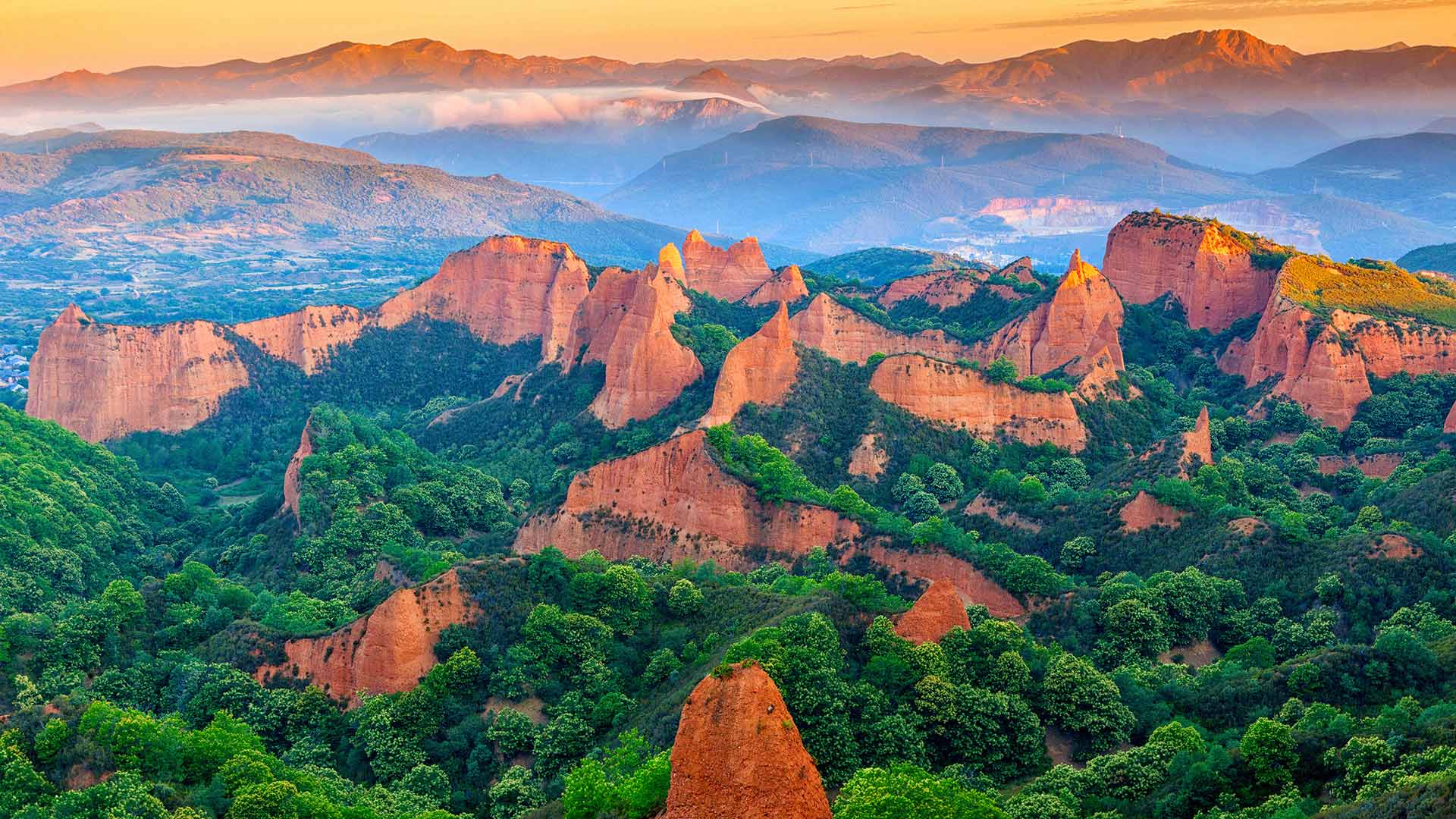
拉斯梅德拉斯的古罗马金矿遗址,西班牙莱昂 Ancient Roman gold mining site of Las Médulas, León, Spain (© DEEPOL by plainpicture/David Santiago Garcia)
The largest gold mine of the roman empire
This landscape might look natural, but it is not. At least not at a 100%. What you can see in our picture today is Las Médulas Cultural Park, in León, Spain, an ancient roman gold mining site which was as well the largest open pit one of the whole Empire.
Romans started exploiting it in the 1st century and continued doing so for 150 years at least. They removed more than 500 million cubic meters of earth and transformed the landscape forever. To extract gold they dug a complex system of tunnels inside the hills and then poured water in it to fragment the rock. It is estimated that more than 20.000 people worked in this site.
The exploitation was definitively abandoned in the 3rd century, and from that moment nature recovered what was its own. Oak trees and holm oaks grew again, and hundreds of chestnuts trees were planted. Wildlife includes roe deers, wildcats and boars, among other species.
圣托里尼岛鸟瞰图,希腊 Aerial view of Santorini island, Greece (© Amazing Aerial Agency/Offset)
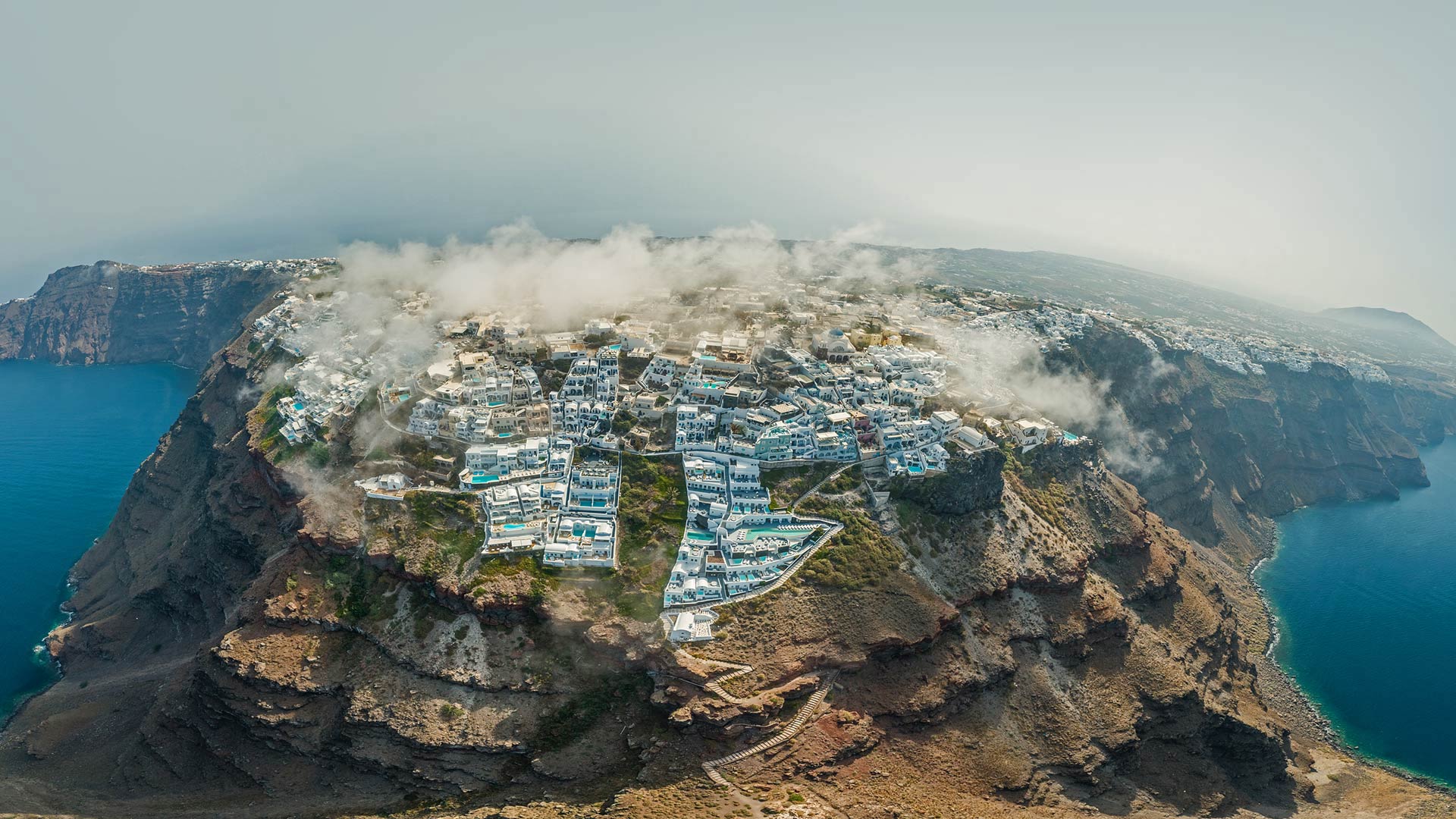
圣托里尼岛鸟瞰图,希腊 Aerial view of Santorini island, Greece (© Amazing Aerial Agency/Offset)
Santorini through the clouds
With its romantic sunsets, dazzling ocean views, and whitewashed buildings clinging to rocky clifftops, the Greek island of Santorini (aka Thera) is the very picture of an idyll in the Aegean. But this tranquil scene belies the island's explosive geologic history, for this is the site of one of the largest volcanic eruptions in recorded history. The Minoan eruption, about 3,600 years ago, caused the center of the Thera Volcano to collapse into the ocean, leaving Santorini a jagged, crescent-shaped moon atop the sea.
The impact of the eruption was more than just geologic—when the volcano blew its top, Santorini was home to a thriving outpost of the Minoan civilization. A farming and fishing community had been established at Akrotiri on the island around 7,000 years ago, and by the time of the eruption had developed into a prosperous city built largely on trade with other cultures of the Aegean. Akrotiri had paved streets, delicate pottery, a drainage system, and multistory buildings decorated in elaborate frescoes. Akrotiri's fortunes ended abruptly, however, with the Minoan eruption, which completely buried the city in pumice and ash. Extensive archaeological excavations began in 1967, revealing artifacts that were remarkably well preserved by the volcanic material; particularly notable were the elegant, colorful frescoes. It seems Santorini has always been a site for the beautiful things in life.
四月的满月从圣迈克尔山上升起,英国康沃尔 The April full moon, or pink moon, rises over St. Michael's Mount, Cornwall, England (© Simon Maycock/Alamy Live News)
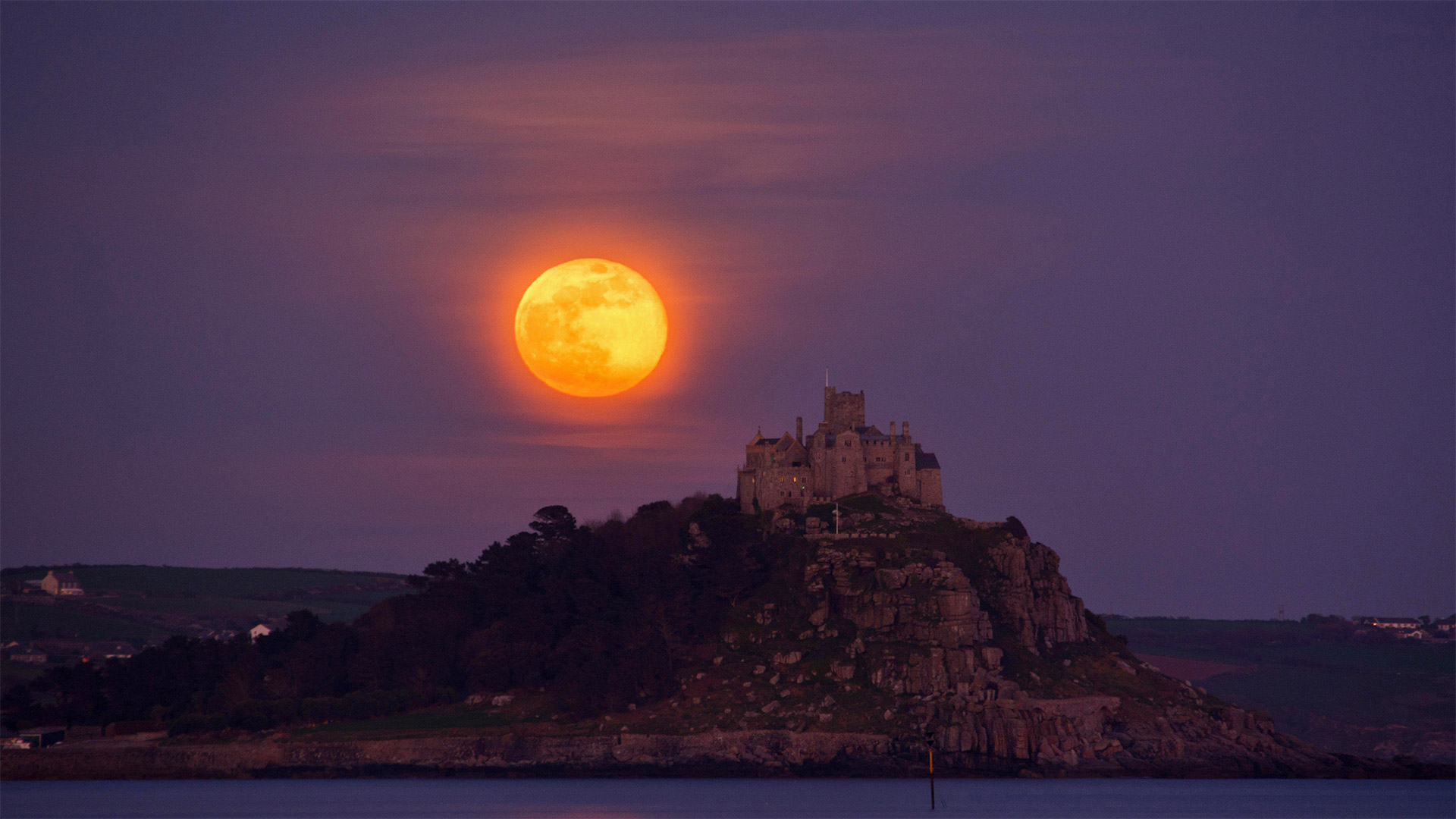
四月的满月从圣迈克尔山上升起,英国康沃尔 The April full moon, or pink moon, rises over St. Michael's Mount, Cornwall, England (© Simon Maycock/Alamy Live News)
Once in a pink moon
We're seeing a vivid 'pink moon' rise above St. Michael's Mount—a granite-encrusted isle connected to the rugged peninsula of Cornwall, England, by sandy flats and a man-made causeway that submerge at high tide. The same order of monks that established France's Mont-Saint-Michel built a church and priory here in the 12th century. In ensuing centuries of war, the insular monastic outpost was fortified into the imposing castle we see today. Privately purchased in 1659, the mount was opened to the public in 1954—and is still managed by members of the family that bought it over 350 years ago.
This photo may give the moon a somewhat salmon tint, but the term 'pink moon' doesn't arise from its coloration, nor from any place near the Cornish shores. The April full moon is called the pink moon because Native Americans associated it with the flowering of wild ground phlox, or moss pink—an early sign of spring in eastern North America. The pink moon for 2020 will crest tonight around 10:30 PM EDT, and for extra effect, it's also a supermoon—that means it'll be full at the same time it's passing closest to Earth, making it appear larger.
盛开的樱花和姬路城,日本姬路 Cherry blossoms and Himeji Castle in Himeji, Japan (© Tororo/Getty Images)
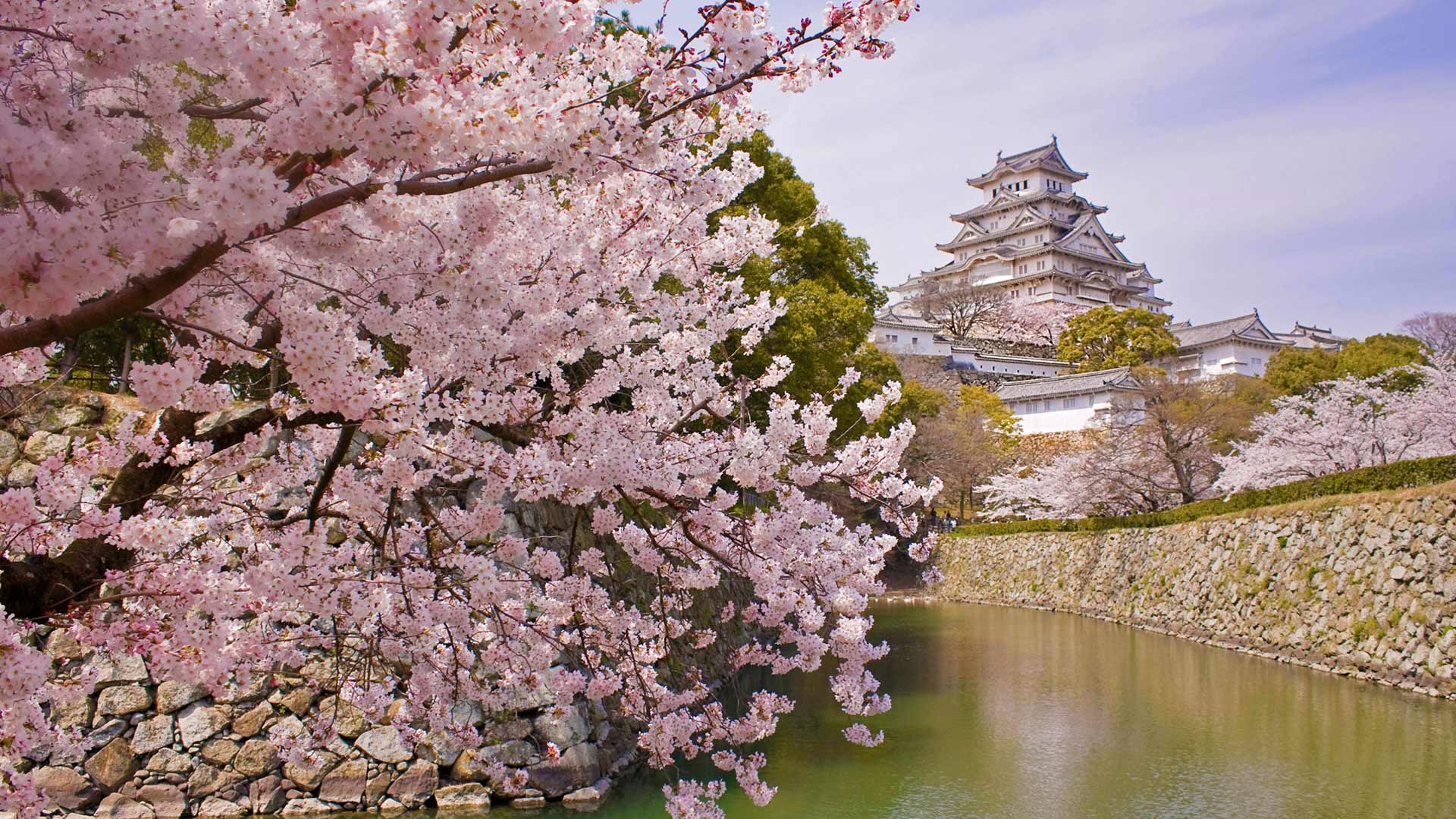
盛开的樱花和姬路城,日本姬路 Cherry blossoms and Himeji Castle in Himeji, Japan (© Tororo/Getty Images)
Castle on a hill
In honor of Castle Day in Japan, we're featuring Himeji Castle—one of the most pristine examples of traditional Japanese castle architecture, and a UNESCO World Heritage Site. Castle Day is on April 6 (or 4/6) because the Japanese character for castle (城) is read as 'shiro,' and the Japanese pronunciation of 'four' is 'shi' and 'six' is 'ro.' Samurai warrior Akamatsu Norimura built Himeji Castle in 1333 as a fortress. Over the years, the structure has undergone many remodels, and several buildings were added as it changed hands. The castle even survived WWII unscathed while surrounding areas were bombed mercilessly.
维多利亚瀑布上的彩虹,赞比亚 Rainbow at Victoria Falls in Zambia (© Dietmar Temps/Shutterstock)
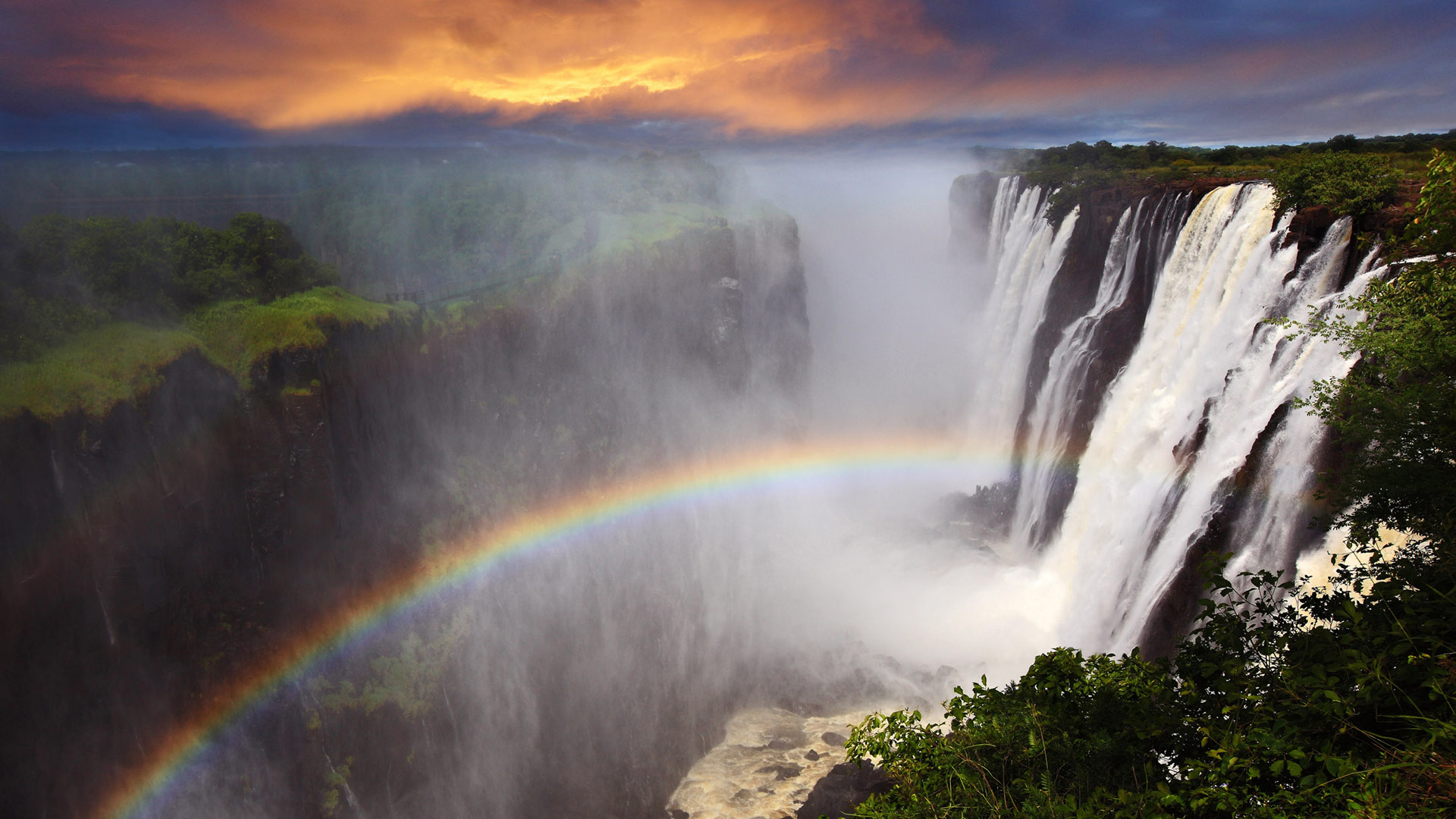
维多利亚瀑布上的彩虹,赞比亚 Rainbow at Victoria Falls in Zambia (© Dietmar Temps/Shutterstock)
The rainbow connection
April showers bring rainbows, and on April 3, the celebration of Find a Rainbow Day. The rainbow shown here is at Victoria Falls in southern Africa on the Zambezi River, on the border between Zambia and Zimbabwe. Scottish explorer David Livingstone named the falls in honor of Britain's Queen Victoria, though it's also still called by its indigenous Lozi language name, Mosi-oa-Tunya, which means 'the smoke that thunders.' According to some historical records, local villagers described the falls to Livingstone as 'Seongo' or 'Chongwe,' which means 'The Place of the Rainbow,' since rainbows usually appear in the fall's constant spray. Under a bright moon, the falls will produce a 'moonbow.'
French philosopher and scientist René Descartes did some of the first studies of optics and rainbows around 1637--but no one at the time understood where the colors came from. In 1666, Isaac Newton explained that sunlight is really a mixture of the colors of the rainbow: red, orange, yellow, green, blue, indigo, and violet.
从庞塞德莱昂河口向灯塔望去,佛罗里达州 Looking inland from Ponce de León Inlet toward the lighthouse, Florida (© Jason Sponseller/Shutterstock)
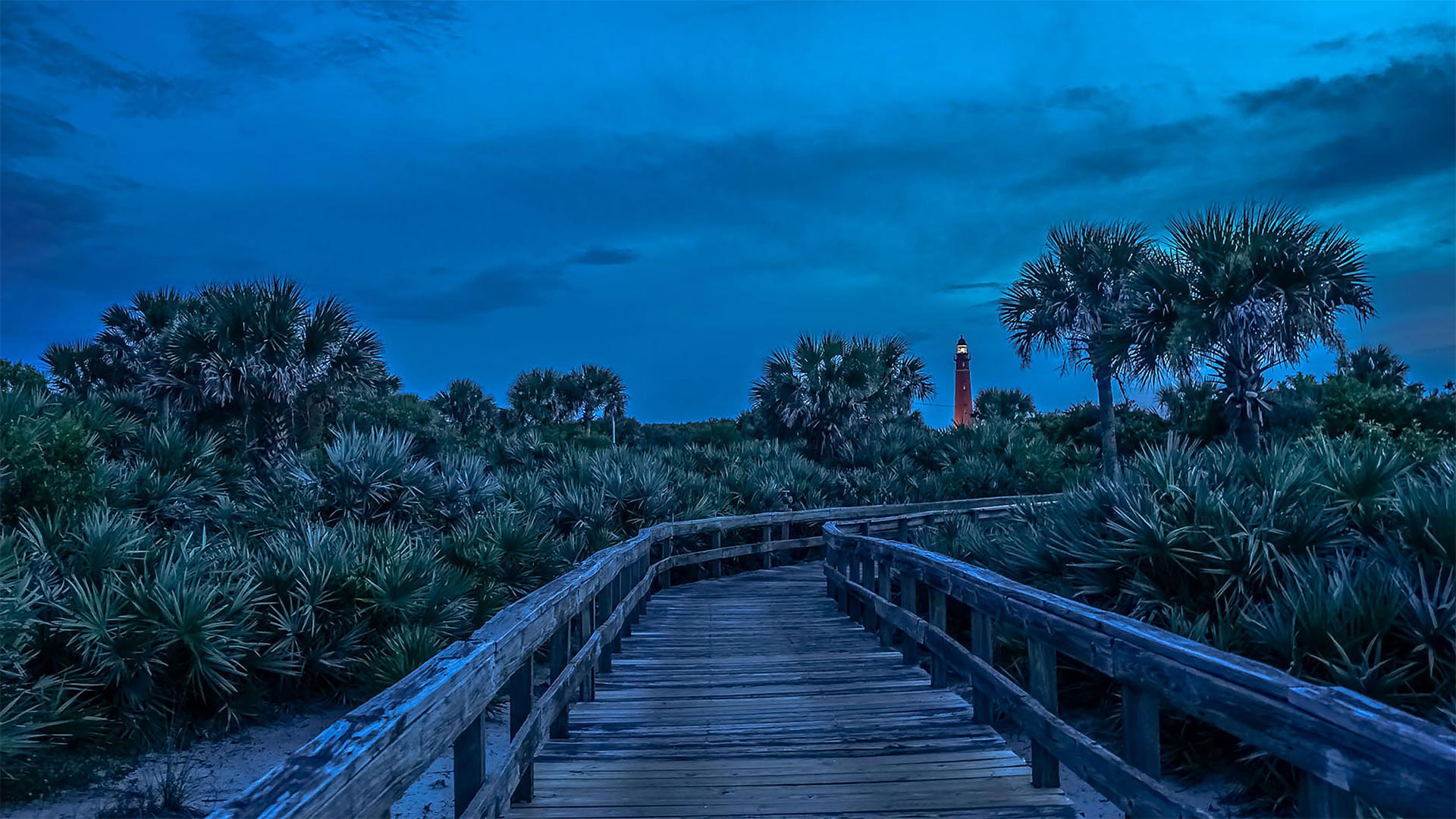
从庞塞德莱昂河口向灯塔望去,佛罗里达州 Looking inland from Ponce de León Inlet toward the lighthouse, Florida (© Jason Sponseller/Shutterstock)
Pascua Florida Day
We're at the Ponce de León Inlet Light in Central Florida for Pascua Florida Day, which marks the anniversary of the Spanish explorer's arrival here in 1513. Believing it to be an island, Ponce de León claimed the land for Spain and named it 'La Florida'—because of the verdant landscape and also because it was during the Easter season, which the Spaniards called 'Pascua Florida' (Festival of Flowers). According to legend, Ponce de León arrived here in search of the Fountain of Youth, a mythical water source said to restore the youth of those who drink or bathe in its waters. While that mission was unsuccessful, his name lives on in history–and on this lighthouse and the inlet where it shines.
